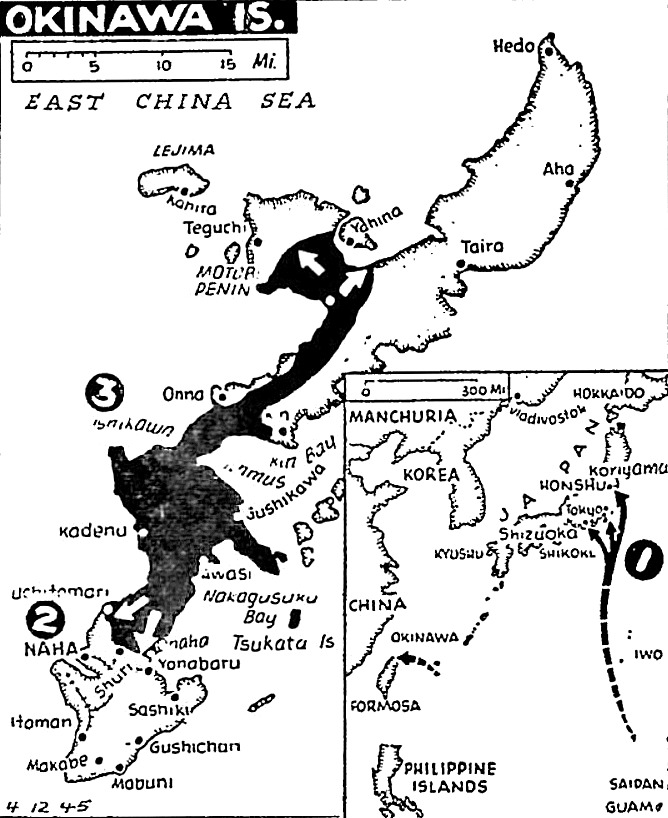Supreme HQ Allied Expeditionary Force (April 12, 1945)
FROM
(A) SHAEF MAIN
ORIGINATOR
PRD, Communique Section
DATE-TIME OF ORIGIN
121100B April
TO FOR ACTION
(1) AGWAR
(2) NAVY DEPARTMENT
TO (W) FOR INFORMATION (INFO)
(3) TAC HQ 12 ARMY GP
(4) MAIN 12 ARMY GP
(5) AIR STAFF MAIN
(6) ANCXF
(7) EXFOR MAIN
(8) EXFOR REAR
(9) DEFENSOR, OTTAWA
(10) CANADIAN C/S, OTTAWA
(11) WAR OFFICE
(12) ADMIRALTY
(13) AIR MINISTRY
(14) UNITED KINGDOM BASE
(15) SACSEA
(16) CMHQ (Pass to RCAF & RCN)
(17) COM ZONE
(18) SHAEF REAR
(19) SHAEF MAIN
(20) HQ SIXTH ARMY GP
(REF NO.)
NONE
(CLASSIFICATION)
IN THE CLEAR
Communiqué No. 369
UNCLASSIFIED: Allied forces have launched an attack westwards across the Ijssel River.
We pushed beyond Fürstenau, crossed the Hase Canal and captured Badbergen, Ankum and Bersenbrück. North of Osnabrück we occupied Bramsche and Vörden.
Southwest of Bremen, our forces are in Wildeshausen and Harpstedt but farther east we are meeting strong enemy opposition.
Our armored elements, advancing more than four miles eastward, have reached the Elbe River at Magdeburg after enveloping Wolfenbüttel, just south of Braunschweig, and passing through Eilenstedt and Wulferstedt, southwest of Oschersleben.
Other armored units have reached Meine, north of Braunschweig, while infantry is heavily engaged in and around the city against stubborn enemy delaying action.
Our infantry made rapid progress to the vicinity of Halberstadt.
Armored and infantry units reached Herzberg and Osterhagen, northwest of Duderstadt. Armored elements cleared Nordhausen, and east of Mühlhausen reached Bilzingsleben, eight miles northeast of Clingen, and are one mile from Kölleda to the southwest after a 22-mile advance.
Southwest of Coburg we made limited advances against scattered resistance.
Schweinfurt was entered after being practically surrounded and heavy house-to-house fighting is in progress. Armored units pushed along the Main River to the east and also made gains to the south.
To the southeast we advanced four miles along the highway between Ochsenfurt and Ansbach, occupying Uffenheim and Rudolzhofen.
Our armor withdrew from a part of the Crailsheim wedge after more than 1,500 prisoners and important enemy materiel were taken.
Our bridgehead over the Kocher River in the vicinity of Niedernhall, was extended to a depth of three miles.
Progress was made in Heilbronn and north of the city two bridgeheads over the Neckar River have been joined.
We made advances up to three miles southeast of Karlsruhe and have reached the Schwartzwald Forest. Our bridgehead across the Enz River east of Pforzheim has been expanded.
Allied forces in the west captured 24,846 prisoners 10 April.
In the Ruhr Pocket our infantry cleared Essen, captured Gelsenkirchen and entered Bochum. We took Fröndenberg south of Unna. West of Meschede we captured Freienohl. Our infantry advancing in the area north of Siegen took Attendorn, while armored elements made limited gains north of Siegburg.
Enemy armor and artillery around Dortmund and in the triangle formed by Remscheid, Gummersbach and Meschede were attacked by fighter-bombers.
In Holland, fighter-bombers attacked a bomb factory buildings at Heveadorp, west of Arnhem; enemy transport withdrawing northward in the Zwolle area; communications between Utrecht, Amersfoort and Zwolle, and a number of gun positions.
In Germany, an oil storage depot, an ordnance depot and an airfield at Regensburg; an airfield and railyard at Ingolstadt; an explosives plant at Kraiburg, east of München; an ordnance depot at Landshut; an oil storage depot at Freihaim, west of München, and rail yards at Treuchtlingen, Neumarkt, Donauwörth and Amberg were attacked by escorted heavy bombers in very great strength.
Enemy troop transports and oil and ammunition supplies in the Bremen area were attacked by fighters and fighter-bombers. Medium and fighter-bombers struck at rail and road targets in the areas of Emden, Bremen, Hamburg and Hannover, railyards at Rotenburg and Soltau were hit and an oil train was blown up at Westen.
Fortified buildings in Braunschweig, heavy artillery and road transport in the area formed by Halle, Jena, Hof and Chemnitz, and airfields in the Braunschweig, Halle, Erfurt and Jena areas and at Cheb in Czechoslovakia were attacked by fighter-bombers. Many enemy aircraft were destroyed or damaged in the attacks on the airfields.
Railyards at Köthen and Zwickau and a motor vehicle plant at Bamberg were attacked by medium and light bombers in strength. Fighter-bombers bombed railyards at Nuremberg and Bayreuth.
Fuel and ammunition dumps at Geislingen an der Steige and in the Ulm area were attacked by medium bombers.
Targets in Berlin were attacked last night by light bombers.
COORDINATED WITH: G-2, G-3 to C/S
THIS MESSAGE MAY BE SENT IN CLEAR BY ANY MEANS
/s/
Precedence
“OP” - AGWAR
“P” - Others
ORIGINATING DIVISION
PRD, Communique Section
NAME AND RANK TYPED. TEL. NO.
D. R. JORDAN, Lt Col FA4655
AUTHENTICATING SIGNATURE
/s/
